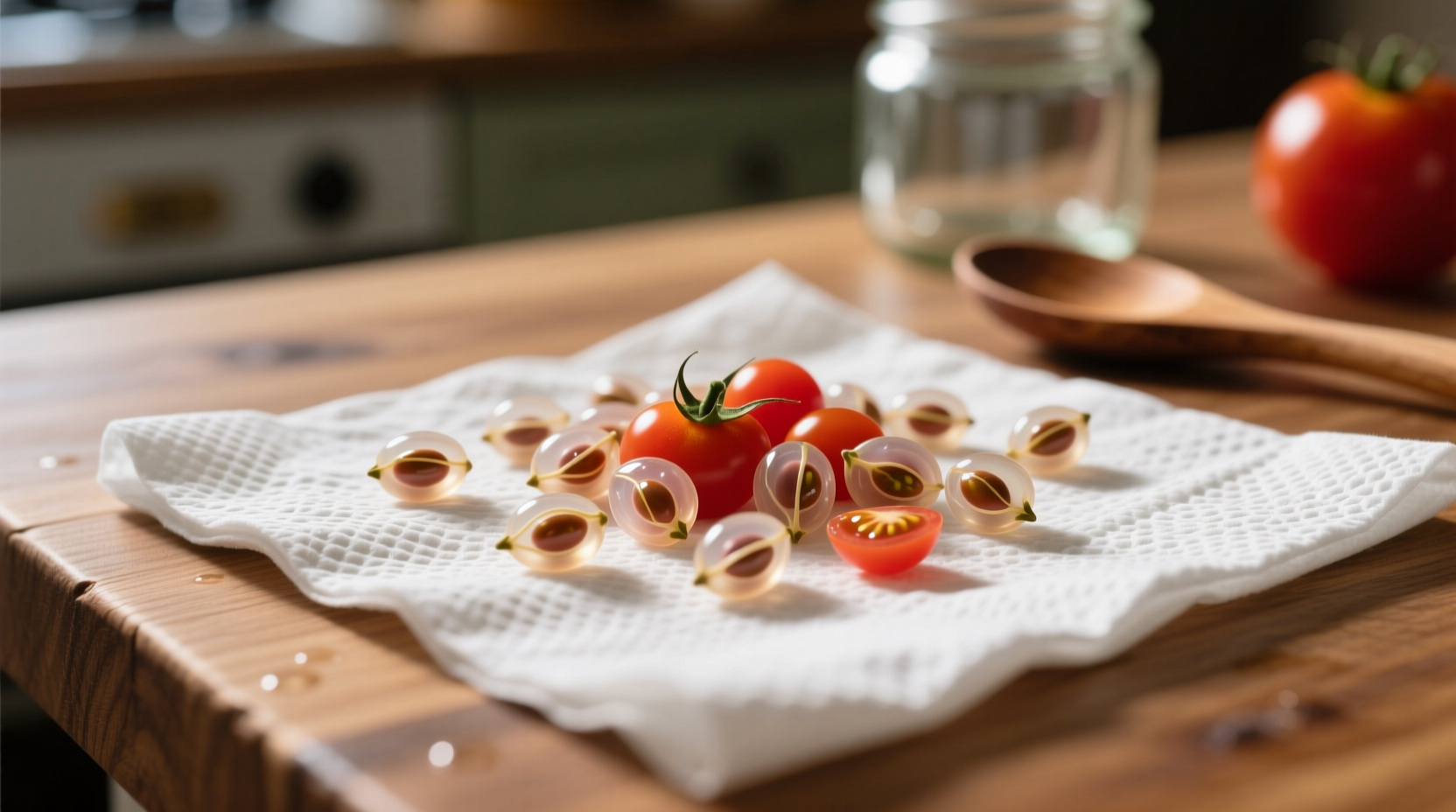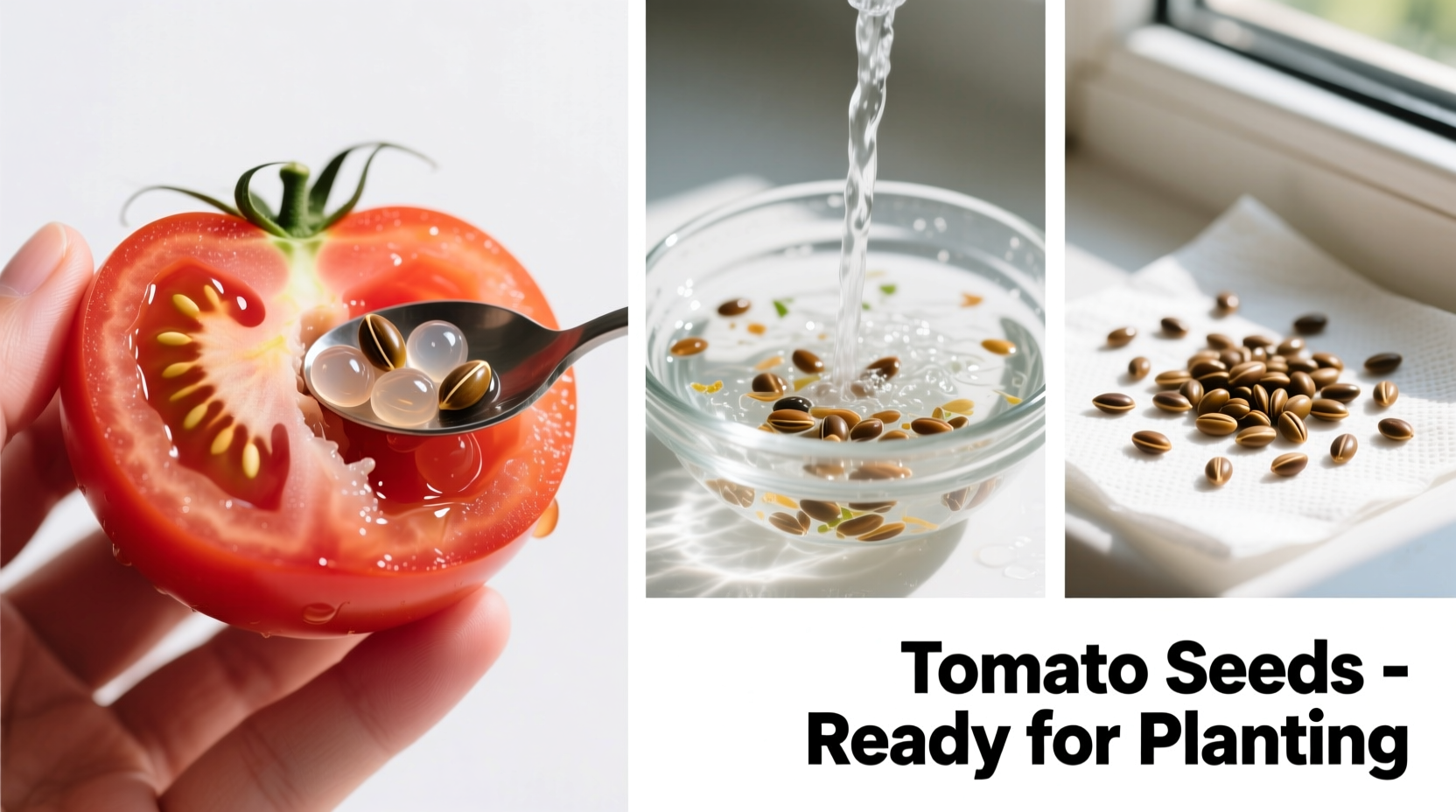Master the art of preserving your favorite tomato varieties with this science-backed seed saving method trusted by gardeners for generations. You'll learn exactly how to harvest, ferment, and store seeds that sprout reliably year after year—saving you money while protecting genetic diversity in your garden.
Why Save Your Own Tomato Seeds?
Tomato seed saving connects you directly to centuries of agricultural tradition while providing tangible benefits:
- Cost savings—eliminate annual seed purchases
- Varietal preservation—protect heirloom genetics threatened by commercial agriculture
- Adaptation—seeds gradually adapt to your specific microclimate and soil conditions
- Sustainability—reduce packaging waste from commercial seed packets
According to research from the University of Minnesota Extension, properly saved heirloom tomato seeds maintain 85% germination rates for up to four years when stored correctly—significantly outperforming improperly processed seeds.
Essential Tools for Successful Seed Saving
Gather these simple supplies before starting:
- Mature, disease-free heirloom tomatoes (not hybrids)
- Small glass or ceramic container (no metal)
- Fine mesh strainer
- Paper towels or unglazed ceramic plates
- Permanent marker for labeling
- Airtight storage containers (glass jars preferred)
| Tomato Type | Seed Saving Viability | Expected Germination Rate | Best For Seed Saving |
|---|---|---|---|
| Heirloom Varieties | Excellent | 85-90% after 3 years | All open-pollinated types |
| Hybrid Varieties | Poor | Unpredictable (30-60%) | Not recommended |
| Cherry Tomatoes | Good | 80% after 3 years | Small-seeded varieties |
Step-by-Step Seed Saving Process
Selecting the Right Tomatoes
Choose fully ripe, disease-free tomatoes from healthy plants. Focus on heirloom varieties like 'Brandywine,' 'Cherokee Purple,' or 'Black Krim'—these produce true-to-type offspring. Avoid hybrid varieties (typically labeled F1), as their seeds won't reliably reproduce the parent plant's characteristics.
Harvesting and Fermenting Seeds
The fermentation process is crucial for tomato seeds—it removes the gelatinous coating containing germination inhibitors:
- Cut tomatoes horizontally and squeeze seeds with pulp into a container
- Add ¼ cup water per tomato and stir daily for 3-5 days
- Watch for bubbling activity indicating fermentation
- When mold forms on top, viable seeds will sink to the bottom
| Day | What to Observe | Action Required |
|---|---|---|
| 1 | Seeds floating, clear liquid | Stir once, cover loosely |
| 2-3 | Bubbles forming, slight odor | Stir daily, monitor mold |
| 4-5 | White mold layer, seeds settled | Proceed to rinsing |
Cleaning and Drying Seeds
After fermentation, separate viable seeds from debris:
- Pour off mold and floating debris
- Rinse thoroughly in a fine mesh strainer
- Spread seeds in single layer on paper towel
- Dry in well-ventilated area away from direct sunlight
- Turn seeds daily for even drying (7-10 days)
Properly dried seeds will snap cleanly when bent. The Seed Savers Exchange confirms that seeds dried below 60% humidity maintain optimal viability.

Common Seed Saving Mistakes to Avoid
Even experienced gardeners encounter these pitfalls:
- Incomplete fermentation—seeds require 3-5 days to fully break down germination inhibitors
- Insufficient drying—seeds must reach 6-8% moisture content to prevent mold in storage
- Mixing varieties—maintain 10-15 foot separation between different tomato types to prevent cross-pollination
- Poor storage conditions—light and humidity rapidly degrade seed viability
Proper Seed Storage for Maximum Viability
Store your carefully saved seeds using these science-backed methods:
- Place completely dry seeds in labeled glass jar with silica gel packet
- Store in refrigerator (40°F/4°C) or freezer for long-term preservation
- Include humidity indicator card if storing long-term
- Test germination rates annually by planting 10 seeds
The USDA National Laboratory for Genetic Resources Preservation confirms that seeds stored at 0°F (-18°C) with 20% relative humidity maintain viability for 10+ years. For home gardeners, refrigerator storage provides excellent results for 3-5 years.
Testing Your Saved Seeds Before Planting
Verify viability before planting season:
- Place 10 seeds between damp paper towels
- Roll towels and place in labeled plastic bag
- Store at 70-80°F (21-27°C) for 7-14 days
- Count sprouted seeds to calculate germination percentage
If germination falls below 70%, consider planting more seeds per hole or replacing your stock. The Cornell University Gardeners' Resource Guide notes that properly stored heirloom tomato seeds typically maintain 85%+ germination through year three.
Planting Your Saved Seeds Successfully
When starting your saved seeds:
- Begin indoors 6-8 weeks before last frost date
- Use sterile seed starting mix (not garden soil)
- Maintain consistent soil temperature of 75-85°F (24-29°C)
- Provide 14-16 hours of bright light daily
- Transplant seedlings after hardening off outdoors
Remember that saved heirloom seeds may show slight variations—this natural genetic diversity actually strengthens your plants' resilience over time.











 浙公网安备
33010002000092号
浙公网安备
33010002000092号 浙B2-20120091-4
浙B2-20120091-4